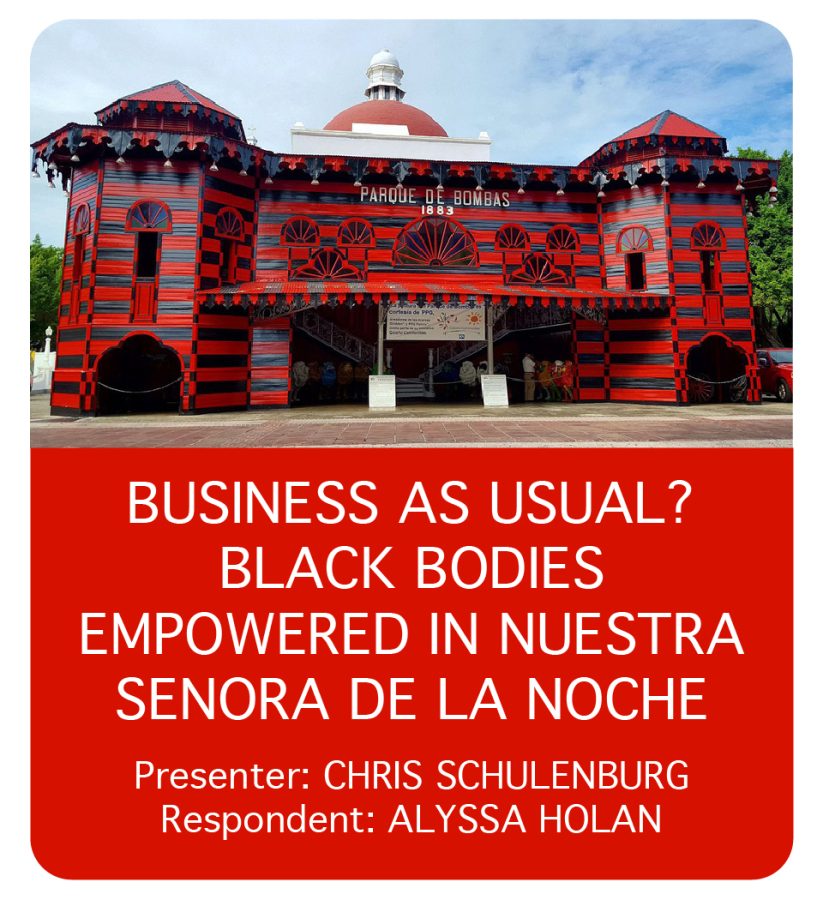LAE Forum: Struggles of Women in Latin America
The history of the presence and disappearance of women
Dr. Christopher Schulenburg, Professor of Spanish, presented the faculty forum series “Business as Usual? Black Bodies Empowered in Nuestra Señora de la Noche.” Professor Alyssa Holan then responded with a perspective in Spain. This forum took place on March 2 in Doudna Hall.
The first half of the presentation was specifically geared toward bodies in Latin America and the second half was focused on the Caribbean. The presentation started with 10 photos to guide the conversation about bodies in Latin America by Dr. Schulenburg.
The first photo had mothers and grandmothers in Argentina from the 1970s walking in protest of the disappeared bodies of their beloved. Many bodies had disappeared and even these women protesting were at risk of also going missing.
The second photo was of a woman banging pots in Chile. They had a bodily presence in Santiago and their noise became a headache as they protested for a democratic election. Their loud presence counteracted the state’s silent disappearances of political figures and other protestors.
Additionally, the third photo showed the la frontera and the maquiladoras. Thousands of young women disappeared at the Mexico and United States border as the young women would walk to and from work and were susceptible to bodily harm from narcotics groups and globalization.
Moreover, women as “beauty queens” generally have celebrity status but no protection that comes with it. A woman who aspires to be a “beauty queen” will have the ability to make a difference as a woman as she gets to leave for the big city for a chance better her life. However, these “beauty queens” are in bodily danger as they are being objectified for their appearance.
To conclude the first half of his presentation, Schulenburg ended with a photo of “La Viuda Negra,” a popular telenovela. The main character was a woman who was married, and her husband suddenly died. All additional boyfriends also mysteriously died because she was involved in narco-trafficking. She worked her way up through the system and had her own bodily autonomy as she became a leader of the drug system.
To start the second half, Dr. Schulenburg reminded the audience of a quote someone made about the Caribbean, “it has no limits and is full of chaos.” Dr. Schulenburg emphasized Puerto Rico and how it is a country of four floors, comparing it to a dollhouse. Women were married and put on the front porch of a house to show the wealth and status of the man.
This conversation of hollowed-out women’s bodies continued with Mayra Santos-Febresas, the next topic. She is a black woman from the Caribbean, and she writes of a woman being a powerful body as her works understand the importance of history with its impact on a body. To close his presentation, Dr. Schulenburg discussed Isabel Luberza, who was the madame of a brothel. She used her body physically to gain power around her.
“Luberza is taking control with sight. Her presence casts a web to the intellectuals and politicians,” Dr. Schulenburg explained. Luberza attended church, causing her clients to squirm in their seats as she had this ability to influence others.
Isabel Luberza was a real person and she was assassinated because she held so much power. Her influence reigned over politicians.
“Isabel in death was multiplied. No one knows who killed her, but the fictional renditions of her cannot trap her in history,” Schulenburg said. There are many Isabels on the island who are becoming their own agents.
“These women will never be pinned down as they are controlling over their destinies,” Schulenburg added. La Fortaleza de Morro overlooks the Caribbean. Schulenburg explained that is another manipulation of sight, “Women are taking care of themselves fictionally and in reality.”
The response from Professor Alyssa Holan will be published in next week’s edition.




